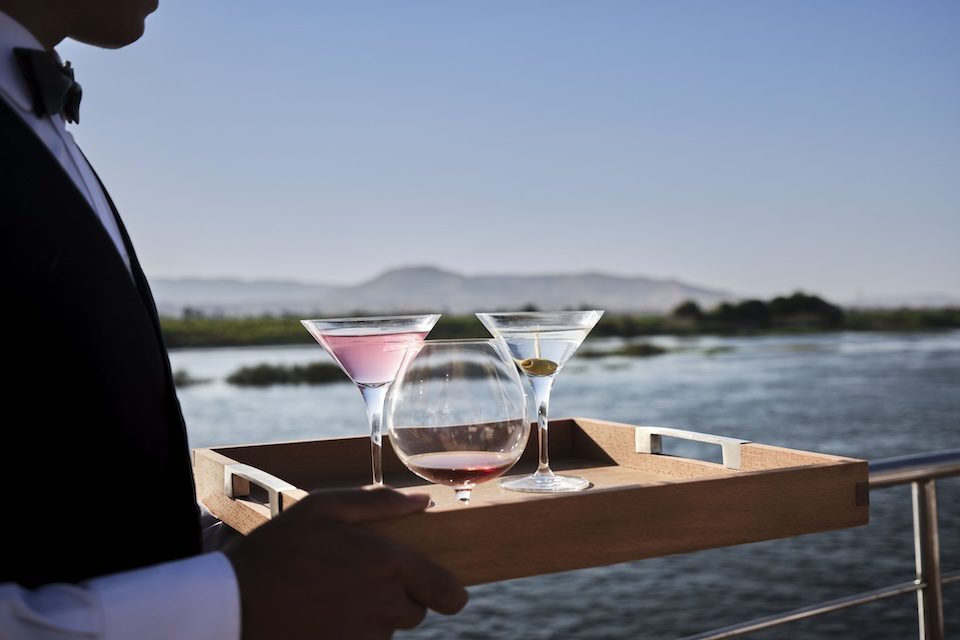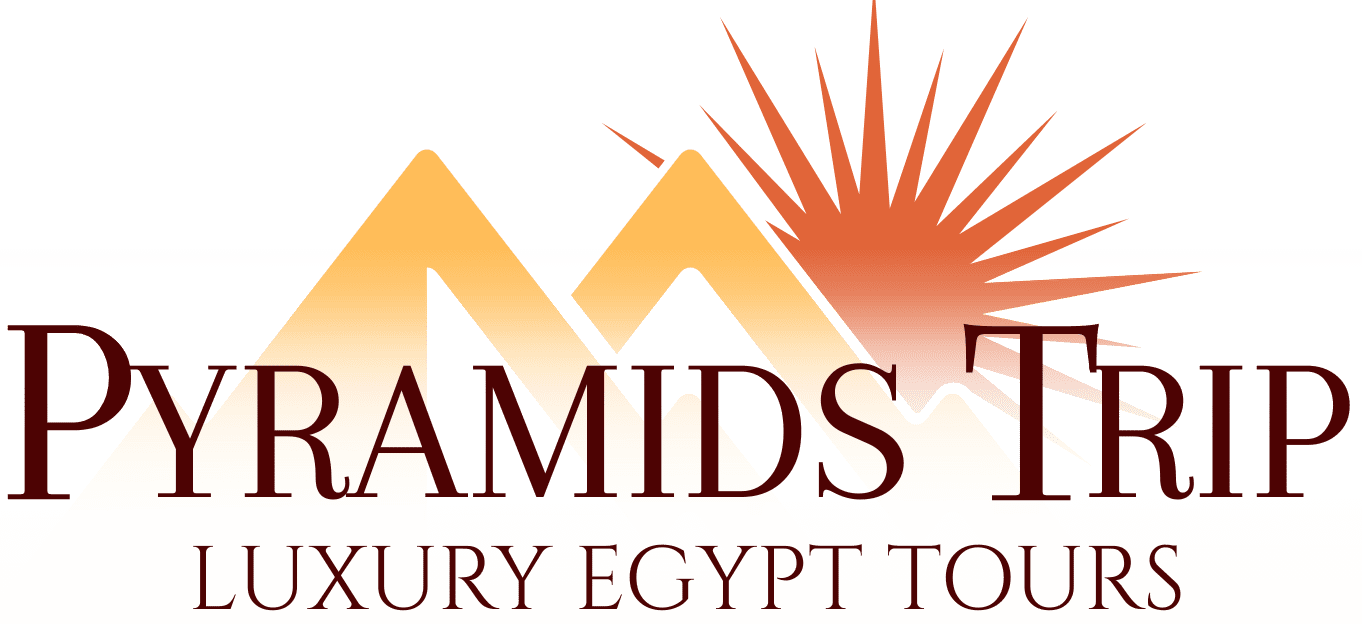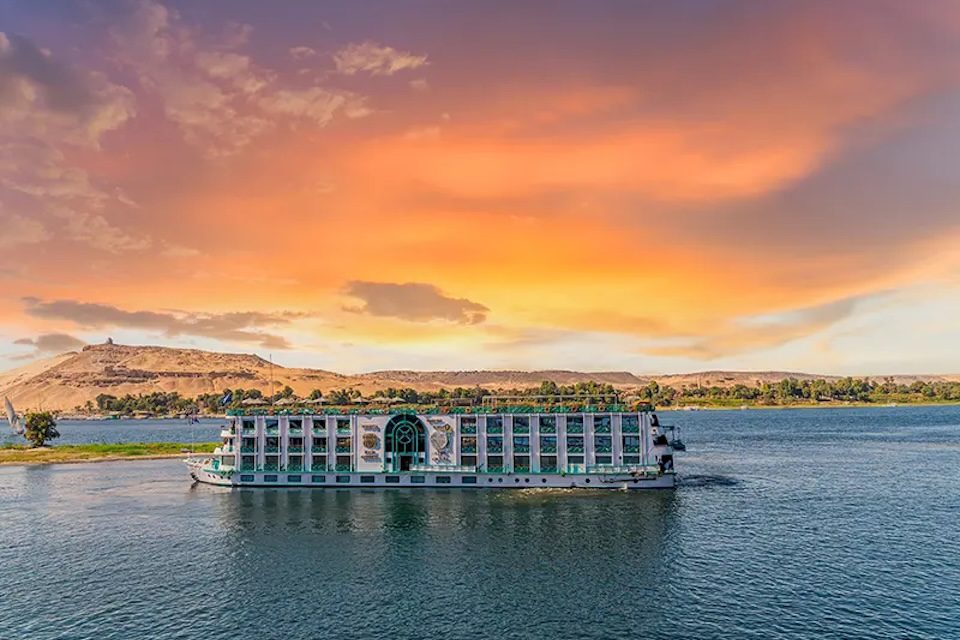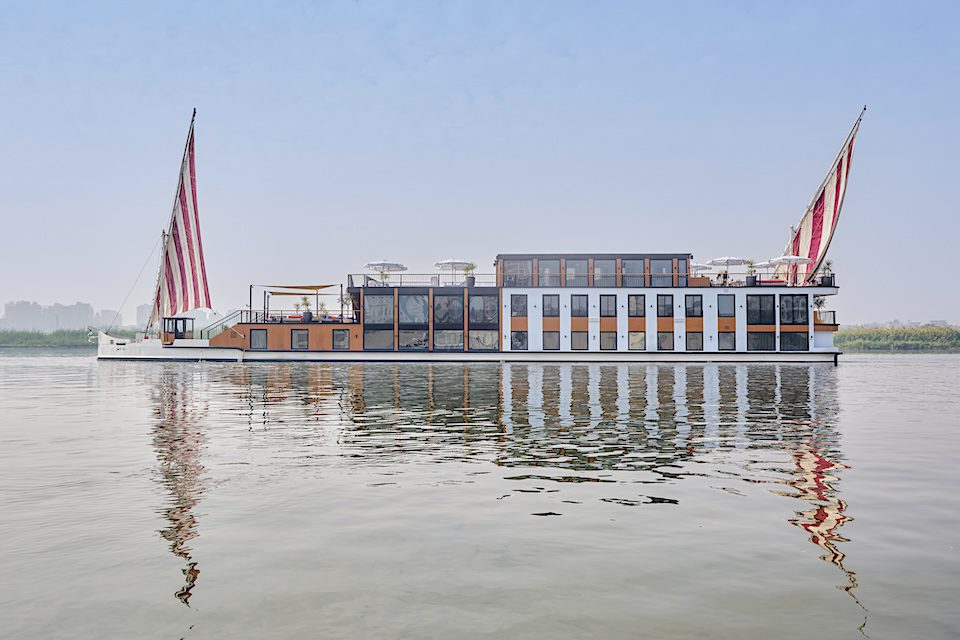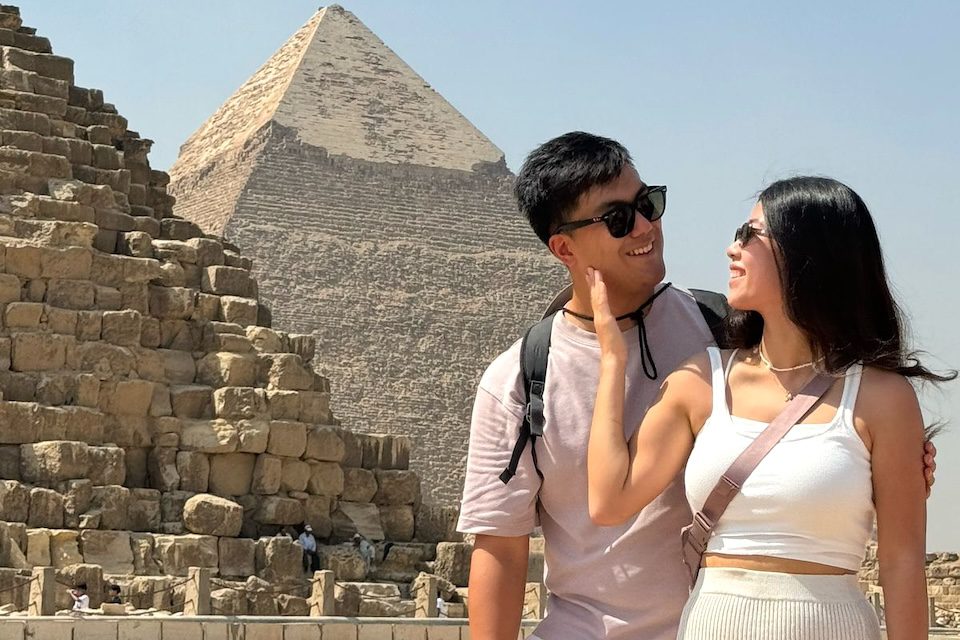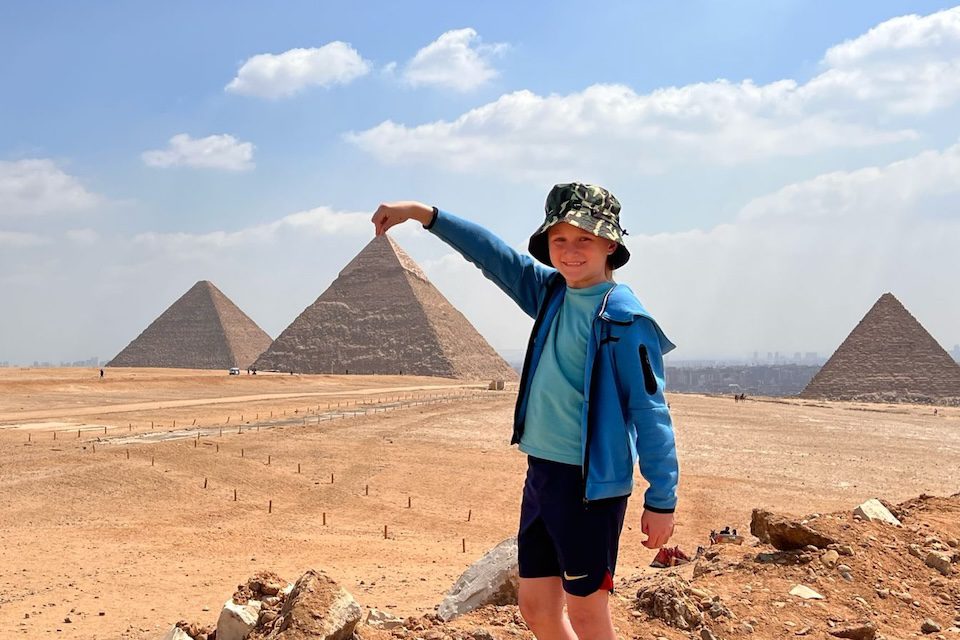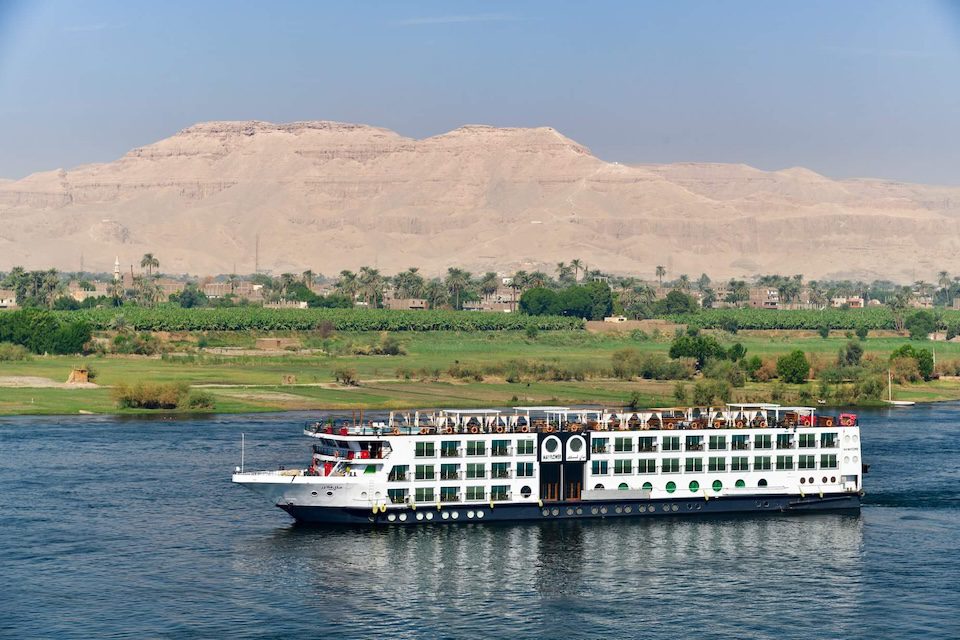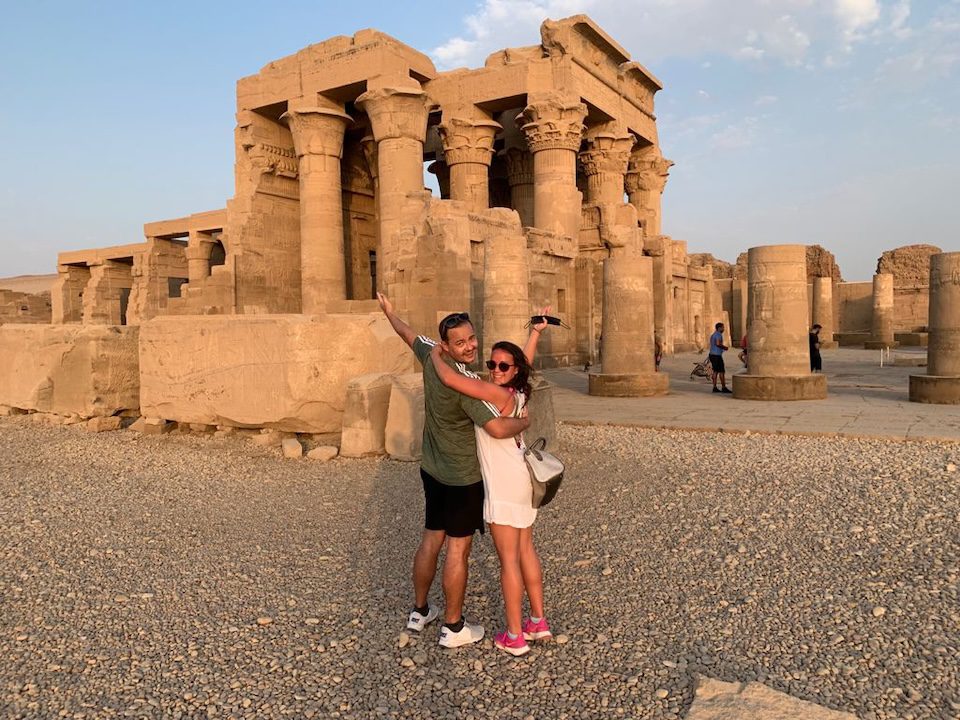
Starting on an Egyptian Nile Cruise is the best way to see the marvels of ancient Egypt. The Nile River, which is the lifeblood of Egyptian civilization, has seen the rise and fall of dynasties, the building of great structures, and the growth of rich cultural traditions. Sail down this historic canal lets visitors experience Egypt through the eyes of ancient pharaohs and intimately interact with its thousands of years past. Examining Water-Side Tombs and Temples The effortless access Nile River Cruise Tours offer to many of Egypt’s most famous ancient sites is among its main attractions. Whether cruising from Luxor to Aswan or the other way around, visitors may see ancient sites such as the Karnak Temple, Valley of the Kings, and the Temple of Edfu. Often placed right along the riverbanks, these locations are conveniently reachable by ship, which lets you tour comfortably yet deeply. Unlike other kinds of travel, a cruise provides both luxury and efficiency as your lodging goes with you. Everyday Life Along the Nile Apart from historical artifacts, an Egyptian Nile Cruise also offers views into contemporary Egyptian life. You will see traditional mud-brick homes, fisherman throwing their nets, and rich green fields as the boat glides down the river. This difference between history and the present offers a well-rounded view of Egypt’s changing identity. A quiet reminder of the Nile’s lasting impact on daily life is watching life develop along the riverbanks while you sip tea on the sun terrace. Rich in culture but opulent experience Modern Nile River Cruise Tours perfectly mix luxury with cultural richness. While most ships have elegant accommodations, excellent food, and panoramic lounges, their inherent cultural programming distinguishes them. Many cruises provide cooking workshops, folkloric performances, and guided lectures that explore Egypt’s rich legacy. These onboard activities increase your knowledge of the nation and help you to appreciate every day spent on the water. Why the Nile is the Key to Ancient Egypt In Egyptian culture, the Nile is a symbol of life, spirituality, and wealth as much as it is a river. From the earliest dynasties, the Nile was seen as a heavenly gift that allowed cultivation and sustained great urban expansions. An Egyptian Nile Cruise lets visitors see the canal that made all this possible firsthand. Knowing how the river shaped the sites of temples, towns, and burial sites allows one to appreciate Egypt’s past. Every Traveler’s Choice of Cruises From affordable choices to opulent five-star trips, there are Nile River Cruise Tours for every kind of tourist. While some cruises may stress wellness or leisure, others concentrate mostly on historical trips. All Nile cruises guarantee an amazing vacation full of adventure, beauty, and comfort regardless of the style. Whether you enjoy history or are more laid-back, there is a cruise to fit your vacation objectives. Maximising Your Cruise The ideal time to arrange your vacation is between October and April, when the temperature is cooler if you want to really enjoy an Egyptian Nile Cruise. Every trip will be maximized by bringing a decent guidebook, suitable walking shoes, and a feeling of inquiry. Many excursions also provide extras, including day visits to Abu Simbel or hot air balloon flights above Luxor, which may further enhance your schedule. Conclusion A Nile cruise is a historical and cultural journey that confronts you with the ancient essence of Egypt, not only a holiday. The trip is packed with unique experiences, whether you are gazing at magnificent temples, savouring traditional cuisine, or just seeing the river flow past. Visit pyramidstrip.com for additional information on how to organize the ideal Egyptian Nile Cruise and investigate many Nile River Cruise Tours.

For visitors looking for history, intrigue, and ageless beauty, Egypt is among those places that ranks first. An Egypt Tour is a trip into a world where modern life interacts with some of mankind’s most famous landmarks, from the majesty of the pyramids to the colourful local markets and ancient temples. Egypt provides an amazing experience with something for everyone, whether you are a cultural lover or an adventure seeker. Reasons a Nile Cruise Should Be Included in Your Travel Including a Nile Cruise in your Egypt schedule is not just advised; it is necessary. The lifeblood of Egypt is the Nile River; a trip down this historic river provides a different view of the old civilization of the nation. A typical Nile Cruise between Luxor and Aswan lets you see a range of notable locations like the Valley of the Kings, Karnak Temple, and Kom Ombo. All the while relishing luxurious lodgings and guided excursions, you’ll sail by palm-lined riverbanks, little towns, and desert scenery. When to Plan Your Egypt Tour When organizing the Best Egypt Tours with Nile Cruise, timing is everything. When the weather is more temperate and pleasant for sightseeing, the greatest time to visit Egypt is between October and April. You will be able to see the pyramids and sail the Nile free of the severe heat that usually characterizes Egyptian summers during these months. Especially if you want to guarantee a place on a high-quality Nile Cruise, which can fill up fast during busy seasons, booking in advance is essential. Must-See Attractions on Your Egypt Trip Every excellent Egypt Tour begins in Cairo, where the breathtaking Pyramids of Giza and the Sphinx may be found. From there, go to the Egyptian Museum to view a large number of artifacts, including those from King Tutankhamun’s tomb. After absorbing the history of the city, fly or take a train to Luxor to start your Nile Cruise. Sail south towards Aswan and be sure to see important archaeological treasures such as the Temple of Hatshepsut, the Colossi of Memnon, and the Temple of Philae. Selecting the Appropriate Nile Cruise Nile cruises vary in quality. When searching for the Best Egypt Tours with Nile Cruise, think about what kind of experience you desire. Luxury cruises provide Egyptologist-led guided tours, spa treatments, and gourmet food. Though with fewer facilities, budget choices nevertheless allow access to historical locations. While some choose a longer trip of up to a week, others prefer a shorter cruise of three to four days. Before making a reservation, make sure to check user ratings and itineraries to guarantee the most value. Advice for a Smooth Travel Experience Preparation is key if you want to maximise your Nile Cruise and Egypt Tour. Always carry light, breathable clothes, a reusable water bottle, and decent-quality sunscreen. Local guides may significantly improve your awareness of the locations; hence, think about using an informed tour company. For little purchases and gratuities, it’s also smart to have some local cash. And remember your camera—Egypt’s monuments and scenery are always beautiful. Cultural Insights to Enrich Your Trip A tour of Egypt is a cultural experience, not only a sightseeing one. During your Nile Cruise, be sure to engage with locals, taste authentic Egyptian food such as kosher or falafel, and participate in onboard entertainment, including belly dance or Nubian music concerts. These cultural events enable you to relate to Egypt outside its ancient stones and monuments and enrich your trip. Conclusion Combining an Egypt Tour and Nile Cruise is among the most rewarding travel experiences you can have, from famous sites to peaceful river trips. It’s the ideal mix of history, leisure, and adventure. Whether you’re admiring the Sphinx or appreciating sunset vistas on the Nile, this trip guarantees lasting memories. Visit pyramidstrip.com and look at a large selection of the Best Egypt Tours with Nile Cruise to begin organizing your ideal Egyptian vacation.

One of the most amazing things is sailing down the Nile River when one is organizing a visit to Egypt. Although group trips are common, more tourists are finding the unique advantages of choosing a Private Nile Cruise. That will secure a private cruise having the exclusive opportunities of meeting the original pleasures of modern Egypt, having fewer passengers online and personal care. A private trip allows you to delve entirely in the history and beauty of the Nile, from the famous temple of Luxor and Karnak to lesser known treasures along the riverbanks. Your Interests Will Guide a Flexible Itinerary The liberty it gives would be the chief benefit of picking a Private Cruise Egypt experience. Unlike typical cruises which follow a strict schedule you can select the route which suits you best on a private cruise. Want to spend more time in the Valley of the Kings or make an impromptu visit to a near village? A private charter lets you do that. The entire trip experience is enhanced in the fact that you have the various freedom to explore as you want, making it both soothing and relaxing. Luxury Amenities and Personalised Service The degree of individual care and luxury on a Private Nile Cruise is another remarkable aspect. From the time you board, you will be treated like a king. Many private cruises have luxuries, including private chefs, spa treatments, and roomy suites with river panorama views; smaller boats imply more attentive personnel. The elegance and exclusivity of a private cruise enhance your Egyptian experience to something very memorable whether you are celebrating a honeymoon or anniversary or just enjoying a once-in-a-lifetime travel. Steering clear of the crowds at Egypt’s main attractions Traveling around Egypt usually involves negotiating busy tourist areas. A Private Cruise Egypt experience will usually get you to sights at off-peak times, though. Key sites like Edfu Temple, Kom Ombo, and Philae may be visited more quietly and meaningfully under this. Fewer people allow you to really soak in the environment and admire the architectural features free of distraction. In a bigger group environment, your guide may also provide historical background and anecdotes you could overlook. Perfect for Small Groups and Families Families, couples, or small groups of friends wishing to enjoy a memorable adventure will find a Private Nile Cruise ideal. A private atmosphere allows you to spend your time together free from others, which helps the cruise to seem like a home on the sea. Whether it means planning a unique supper beneath the stars or a cultural seminar onboard, activities may be tailored to suit the interests and ages of your company. Find Undiscovered Nile Gems Though the Nile River also provides access to undiscovered treasures frequently missed by bigger cruise ships, massive temples and ancient monuments are certainly spectacular. A Private Cruise in Egypt lets you see archaeological sites off the main road, local marketplaces, and little towns. These genuine experiences provide amazing chances for photography, local contact, and real adventure, as well as a closer link to Egyptian culture. All-Inclusive Choices for Smooth Travel Many private cruises include all-inclusive packages, which cover your domestic flights, activities, and meals. This lets you completely relax and enjoy your time and helps you to arrange your vacation far more easily. Knowing everything is set for you gives peace of mind, particularly in a location as historically rich and logistically complicated as Egypt. Conclusion Selecting a Private Nile Cruise is an opportunity to really engage with Egypt’s magnificent scenery and historical past in a leisurely, meaningful manner rather than just a luxury. A Private Cruise Egypt experience offers lasting experiences from the tailored treatment to the capacity to discover at your speed. Visit pyramidstrip.com to organize your amazing Nile tour; see how a private cruise may turn your vacation into something exceptional.

Many people dream of visiting Egypt, and selecting Egypt All-Inclusive Tours is among the finest methods to realize that desire, both simple and unforgettable. From ancient pyramids to the magnificent Nile, Egypt is a place rich with marvels; all-inclusive trip packages let you enjoy it all without the trouble of organizing every detail. Travelers may completely immerse themselves in the beauty and history of this ancient region while leaving the practicalities to the professionals by means of meals, lodging, guided tours, and even admission fees combined into one package. Best Places in Egypt Covered All-Inclusive Vacation Packages The majority of Egypt vacation packages All Inclusive, are meant to guide you over the most famous sites in Egypt. You will probably start in Cairo, where the Sphinx and Great Pyramids of Giza reside. From there, you may go south to Luxor and Aswan, where the Valley of the Kings, Karnak Temple, and Philae Temple wait. Many packages also feature a soothing Nile River cruise, which provides a different view of Egypt’s ageless scenery and riverbank towns. Expert local guides mixed with these locations create an amazing and rewarding trip. What Comes With Egypt All-Inclusive Tours Booking Egypt All-Inclusive Tours gives you far more than only lodging. These packages frequently include airport transfers, domestic flights inside Egypt, three daily meals, guided tours, museum admission fees, and occasionally even cultural activities like traditional feasts or camel rides. Having all these components planned and paid for lets you enjoy every minute free from concern about additional expenses accumulating. In a nation like Egypt, where negotiating transit and entrance tickets on your own might be difficult, this ease is particularly useful. Advantages of All-Inclusive Egypt Vacation Packages Cost management is one of the key benefits of Egypt Vacation Packages All Inclusive. Knowing the whole cost in advance enables you to plan more effectively and removes unanticipated costs. Traveling in a group or with a tour guide brings peace of mind, especially in a location where language hurdles or unknown traditions may otherwise be frightening. These packages also guarantee you visit the highlights and hidden treasures without spending time on pointless excursions. Perfect for Families and First-Time Tourists All-inclusive choices are great whether you’re traveling with your family or if this is your first visit to the area. The country of Egypt Often planned with comfort and safety in mind, all-inclusive tours are perfect for those who want a planned schedule. When meals and daily activities are already planned, families will value the simplicity of traveling with children. Having local guides who know the region and can assist with cultural subtleties also provides extra comfort. Cultural Immersion with All-Inclusive Experiences Many all-inclusive Egypt vacation packages go beyond standard sightseeing. They can include genuine Egyptian activities like learning to prepare Egyptian food, appreciating traditional music and dance performances, or seeing local marketplaces. These extra details not only enhance your trip but also offer more understanding of the culture and lifestyle of the nation. These immersive components are what make all-inclusive travel not only practical but also really important. Selecting the Appropriate Egypt Tour Package Your interests and travel speed should guide you as you choose from the great range of Egypt All-Inclusive Tours. While some packages could give luxury and leisure priority, others concentrate more on historical and archaeological significance. Review the schedule to make sure it covers the locations and activities you most like. Furthermore, think about the size of the group and the standard of lodging, as these elements might significantly affect your general pleasure. Conclusion Egypt Vacation Packages All Inclusive are the ideal answer for travellers wishing to enjoy the enchantment of Egypt without the burden of planning flights, accommodations, and daily activities. From Cairo to the Valley of the Kings and all in between, these packages combine convenience, value, and lasting experiences. Visit pyramidstrip.com to begin organizing your hassle-free Egyptian trip and choose the ideal all-inclusive package for your next travel.

For visitors wanting to lose themselves in ancient history, Egypt has always been a fascinating draw. Central to this interest are the world-famous pyramids—monumental buildings that have survived the test of time. Egypt Pyramid Tours provides a stunning trip into the past, whether your interests lie in the mystery of the pharaohs, the architectural wonders, or the appeal of desert landscapes. These trips let you fully experience one of the most famous civilizations in human history. Why the Giza Plateau Should Be Your Initial Stop Visiting the Giza Plateau, home of the Great Pyramid of Khufu, the Pyramid of Khafre, and the Pyramid of Menkaure, would complete any journey to Egypt. Over 4,500 years old, these buildings still astound tourists with their size and accuracy. Often featuring the mysterious Sphinx, which remains a quiet protector of the pyramids, most Egypt Pyramid Tours begin at this amazing location. The plateau provides an exceptional backdrop to study ancient burial customs and the importance of these royal graves. Diving Deeper with Expert Egypt Pyramid Tours Specialized trips that explore the archaeological and spiritual sides of ancient Egyptian civilization are offered for those who desire a more thorough experience. These might involve Egyptologist encounters offering thorough analysis, trips to nearby tombs, and access to internal chambers inside the pyramids. Whether you are a seasoned history buff or a first-time tourist, these concentrated Egypt Pyramid Tours expose lesser-known mysteries and increase your respect for ancient Egyptian creativity. Combining Your Pyramid Adventure with Cairo Tours Packages Although the pyramids are the main attraction of any Egyptian vacation, Cairo itself is a gold mine of historical and cultural marvels. Often integrating pyramid trips with urban discoveries, Cairo Tours Packages provide a well-rounded view of Egypt’s capital. Cairo is a city that effortlessly mixes ancient and modern life, from the Egyptian Museum containing King Tutankhamun’s golden mask to the lively Khan El Khalili market. These packages guarantee that visitors get the whole narrative of Egypt’s lively legacy. Discover Beyond the Pyramids: Sakkara and Dahshur Many Egypt Pyramid Tours go beyond Giza to cover other important locations such as Sakkara and Dahshur. Home to the Step Pyramid of Djoser, Sakkara is said to be the first massive stone structure in Egypt. Dahshur, on the other hand, has the Red Pyramid and the Bent Pyramid, both of which are vital for grasping the architectural development leading to the classic pyramid form. Visiting these lesser-known locations offers a more complete view of ancient Egyptian inventions. Cairo Tours Packages: Convenient and Customisable Different travellers have different interests and time limits; hence, Cairo Tours Packages are available in several shapes. From half-day urban highlights to multi-day cultural immersions, you may select. Often included in these packages are guided transportation, entry fees, and even meals—thereby making the trip pleasant and stress-free. Custom choices let you customize your schedule, so whether your interests are ancient history, Islamic architecture, or modern Egyptian life, there is a trip that fits you. What to Anticipate on a Pyramid and Cairo Tour Usually, both Egypt Pyramid Tours and Cairo Tours Packages include the convenience of air-conditioned transportation, expert guides, and well-chosen sites that maximize sightseeing possibilities. Expect early morning departures to beat the desert heat and make the most of the finest photographic lighting. Many historical sites need a good amount of walking, so dress comfortably and use walking shoes. Often offering interesting information not found in guidebooks, guides enhance your trip with background and narrative. Conclusion A trip that brings history to life is one spent discovering Egypt’s pyramids and the lively streets of Cairo. Whether you’re meandering through historic bazaars in the center of the city or admiring the massive buildings of Giza, both Egypt Pyramid Tours and Cairo Tours Packages guarantee lasting experiences. Visit pyramidstrip.com to design your ideal Egyptian travel and investigate several tour possibilities

Understanding your travel style first can help you navigate the various choices for guided tours in Egypt. Do you favor a leisurely speed with time to discover local culture, or are you the sort that flourishes in a fast-paced schedule packed with sites? Egypt has a wide range of trips, from backpacker-style excursions to opulent Nile cruises, so knowing your tastes can help you select a vacation that matches. Whether you enjoy history, adventure, or cultural immersion, there is a great Egypt tour guide for you. Cultural Experiences vs. Historical Places Though Egypt has a rich past, it also has a dynamic, current culture that merits investigation. While some include modern experiences, including local markets, attending traditional dance performances, or even experiencing genuine Egyptian food in a local house, others emphasize the ancient marvels—think pyramids, temples, and tombs. A trip that strikes a balance between both elements will help you to appreciate more the past and present of the nation. Ensure your Egypt tour guide is well-versed in contemporary culture as well as historical information. Group size is more important than you believe. Your whole experience might be greatly influenced by the size of your tour group. Though they tend to be less flexible and more hurried, large group trips may be a wonderful way to meet people from all over the world and are sometimes more economical. Often, with the option to customize the itinerary to your preferences, smaller groups or private guided tours of Egypt provide a more individual experience. A small-group or private trip is the best choice if you want deep discussions with your Egypt tour guide or wish to spend time at every location. Select the Appropriate Kind of Tour Guide Some tour guides are better than others. A qualified Egypt tour guide offers a love of Egypt’s rich legacy, local insights, narrative ability, and not just historical information. Before making a decision, it’s advisable to look at reviews or request credentials. While some guides concentrate on religious history, present politics, or art and architecture, others are Egyptology experts. A tour will be far more interesting and enlightening if you match the guide’s knowledge to your interests. Look at what’s included in the tour package. Some all-inclusive guided tours of Egypt cover internal transportation, admission fees, food, and lodging. Some may provide just the fundamental guiding services, so you need to plan your transportation. Knowing what is covered helps prevent unanticipated expenses later on. Be careful to contrast what several tour operators provide. If it comes with convenience, comfort, and a skilled Egypt tour guide, a somewhat greater price might be justified. Tour Timing and Duration Especially in the summer, Egypt’s weather may be severe. Usually, the ideal time to come is between October and April when temperatures are more moderate. The length of the tour also counts. While lengthier tours may cover Luxor, Aswan, and even seaside destinations like Alexandria or Sharm el-Sheik, short visits can concentrate just on Cairo and Giza. Your available time will determine what you can see, so plan appropriately and select guided tours of Egypt that fit your timetable. Search for unusual experiences and add-ons. Beyond the conventional locations, several excursions provide unusual extras such as Red Sea scuba diving, overnight desert camping, or hot air balloon rides above Luxor. These encounters may turn your vacation from average to amazing. Look for guided tours of Egypt that go beyond the fundamentals and provide once-in-a-lifetime possibilities if you want something a little unusual. Please enquire about your Egypt tour guide may assist you in personalizing some of your trips. Conclusion Selecting the finest guided tours of Egypt requires matching what is offered with your interests, comfort level, and trip objectives. A well-matched Egypt tour guide may make all the difference, bringing insights that bring the ancient world to life while letting you connect with the Egypt of now. Before making a reservation, take your time to study, read reviews, and feel free to ask questions. Visit pyramidstrip.com for reliable vacation planning and customized experiences.

1. Easily Uncover Egypt’s Ancient Treasures The chance to see Egypt’s historical marvels without the strain of overland travel makes booking Nile Cruise Holidays one of the most enticing justifications. Many famous temples and ancient monuments are along the banks of the Nile, which has been Egypt’s lifeline for thousands of years. Choosing Nile River Cruises Egypt means you are starting a historical trip. Often main destinations on these cruises, Luxor and Aswan—two of Egypt’s most historically rich cities—give visitors access to the Valley of the Kings, Karnak Temple, and Philae Temple—all from the luxury of their floating hotel. 2. Have a Distinct and Relaxing Travel Experience Nile River Cruises Egypt provides a calm and rich method to view the nation, unlike the rush and bustle of buses or autos. Imagine drinking a refreshing drink on the deck as the beautiful green countryside drifts past, with palm trees swinging softly and the odd minaret or temple rising from the shores. Nile Cruise Holidays let you relax between trips. Thus, they mix sightseeing with leisure. Many ships also have sun decks, pools, and spa services, thereby combining a trip that is quite calm with cultural enrichment. 3. Total Convenience One of the key benefits of Nile Cruise Holidays is the all-inclusive character of the journey. Most cruises provide lodging, food, guided tours, and occasionally even entertainment. This lets you concentrate completely on enjoying the trip and removes the uncertainty from travel preparation. Nile River Cruises Egypt will relieve you of concerns about hotel check-ins or reserving local transportation to historical locations. Everything is handled, so you may spend more time in the beautiful scenery and interesting tales of ancient Egypt. 4. Visit Remote Sites Difficult to Access by Land Many of Egypt’s hidden jewels are best reached by boat; therefore, Nile River Cruises Egypt is a perfect opportunity to discover off-the-beaten-path riches. Often featured in cruise itineraries, the Temple of Kom Ombo and the Temple of Edfu might be difficult to get on a conventional road trip. Less busy than the more renowned locations, these well-maintained temples provide a great understanding of Egyptian mythology and design. Choosing Nile Cruise Holidays opens the door to experiences many land travellers may miss. 5. Genuinely engage with Egyptian culture. Sailing the Nile offers a unique opportunity to see daily life in Egypt from a different angle in addition to touring ancient sites. On Nile River Cruises Egypt, you’ll travel by traditional communities, all while enjoying the ageless beauty of the river, farmers working their farms, and fisherman throwing their nets. Some cruises also have cultural events like traditional music and dance, hence deepening your knowledge of contemporary Egyptian culture. These interactions turn Nile Cruise Holidays into a well-rounded travel experience that goes beyond the usual tourist agenda. Conclusion Nile River Cruises Egypt provides a wonderful chance to see one of the oldest civilizations still in existence, from stunning temples and picturesque river vistas to cultural immersion and total comfort. Nile Cruise Holidays provide an amazing trip through time whether you are a history lover, a romance tourist, or someone searching for a unique holiday. Visit pyramidstrip.com for additional information and booking choices to organize your next Nile journey.

Top 5 Thrilling Activities You Can Experience on a Nile Cruise in Egypt A Nile cruise is more than just a journey down the world’s longest river; it’s a gateway to Egypt’s ancient wonders, vibrant culture, and breathtaking landscapes. Whether you’re a history enthusiast, an adventure seeker, or simply looking to unwind in luxury, a Nile cruise offers an unparalleled experience. Here are the top five thrilling Nile cruise activities that will make your trip unforgettable.

Embarking on a Nile cruise between Luxor and Aswan is akin to sailing through the annals of ancient history, where each meander of the river unveils tales of pharaohs, monumental temples, and timeless landscapes. These journeys offer an immersive experience into Egypt’s rich heritage, with meticulously curated 4- and 5-day Nile cruise packages that cater to discerning travelers seeking both luxury and profound cultural insights.
